Addressing the River Wye Phosphate Pollution
(1) Average of ALL WSA samples from all locations in respective months.
(2) Targets fpr phosphates vary by designated sections of rivers or streams. Data based on WFD objectives is taken from EA Catchment Data Explorer Portal and NRW Compliance Assessment of Welsh River SAC's Against Phosphorous Targets Jan 21. Month target averaged in line with sample averages.
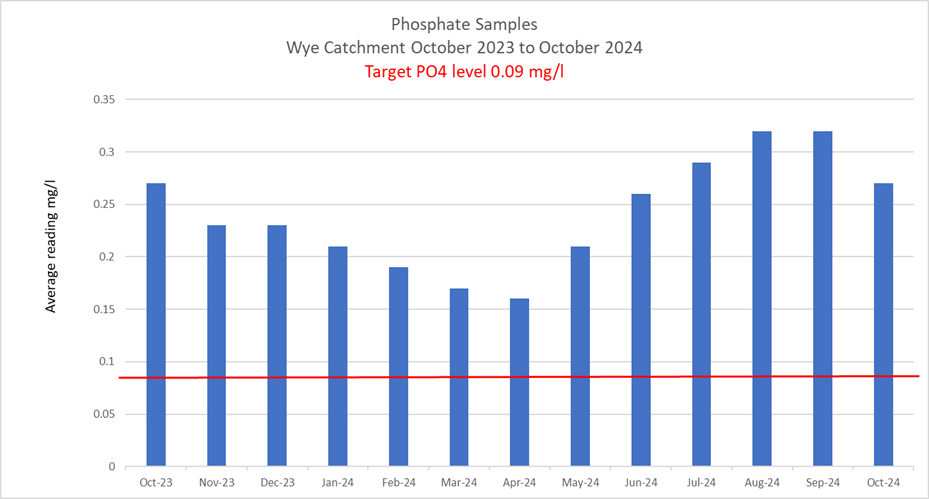
(1) Average of ALL WSA samples from each location taken since start of project in 2023 / 2024
(2) Targets fpr phosphates vary by designated sections of rivers or streams. Data based on WFD objectives is taken from EA Catchment Data Explorer Portal and NRW Compliance Assessment of Welsh River SAC's Against Phosphorous Targets Jan 21.
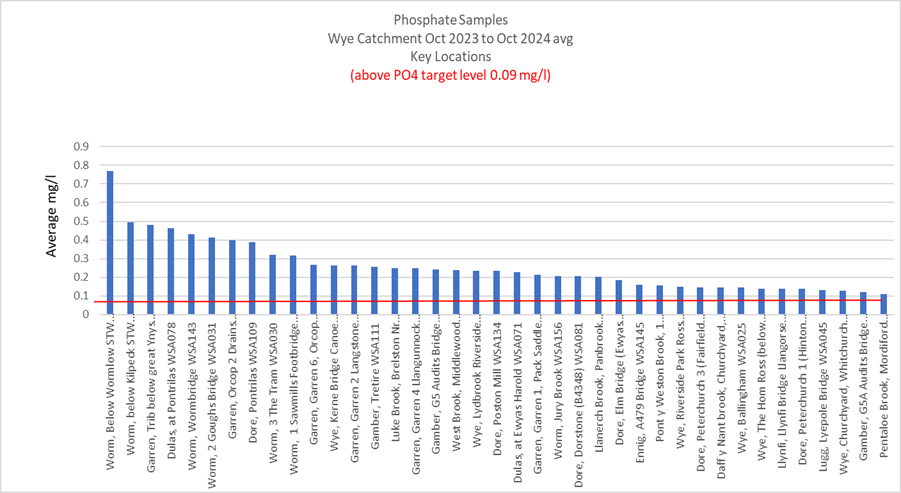
(1) Average of ALL WSA samples from all locations in respective months.
(2) Targets fpr phosphates vary by designated sections of rivers or streams. Data based on WFD objectives is taken from EA Catchment Data Explorer Portal and NRW Compliance Assessment of Welsh River SAC's Against Phosphorous Targets Jan 21. Month target averaged in line with sample averages.
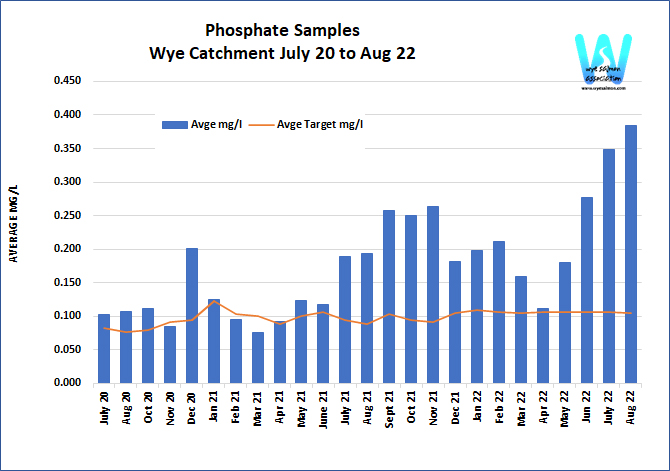
(1) Average of ALL WSA samples from each location taken since start of project in July 2020
(2) Targets fpr phosphates vary by designated sections of rivers or streams. Data based on WFD objectives is taken from EA Catchment Data Explorer Portal and NRW Compliance Assessment of Welsh River SAC's Against Phosphorous Targets Jan 21.
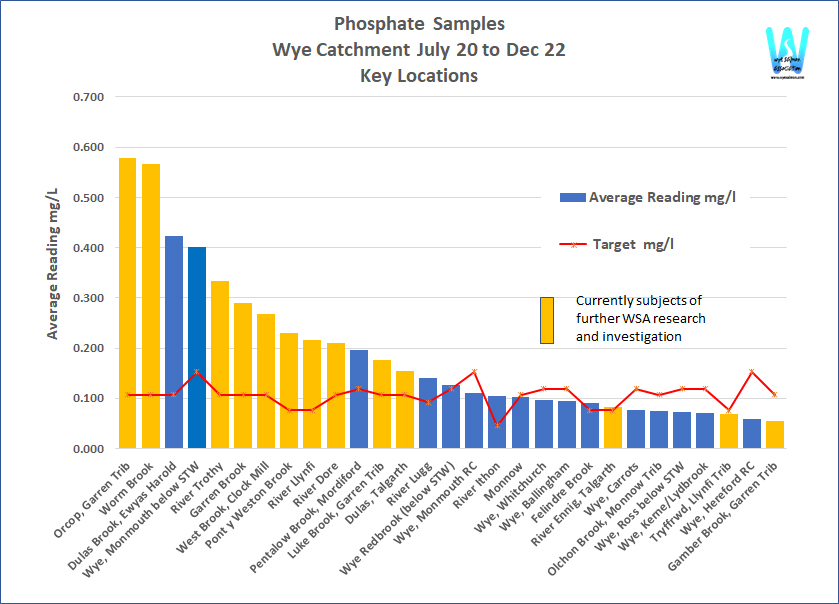
WSA Phosphate Monitoring Project
The Wye has again turned a putrid green due to severe algal bloom. Thick blooms can have severe and permanent effects on the river’s ecology. Sunlight is prevented from reaching aquatic plants such as Ranunculus aquatilis (Common water crowfoot), impeding growth and even killing them. These plants play a vital role in the river’s ecology, providing food and habitat for a range of invertebrate, fish and bird species. Excessive algae reduces the availability of oxygen in the water at night time, which when combined with high temperatures, can kill fish such as atlantic salmon, barbel and brown trout.
blooms can have severe and permanent effects on the river’s ecology. Sunlight is prevented from reaching aquatic plants such as Ranunculus aquatilis (Common water crowfoot), impeding growth and even killing them. These plants play a vital role in the river’s ecology, providing food and habitat for a range of invertebrate, fish and bird species. Excessive algae reduces the availability of oxygen in the water at night time, which when combined with high temperatures, can kill fish such as atlantic salmon, barbel and brown trout.
Algal blooms can be caused by a combination of factors, including levels of light and flow. However, a large increase in the amount of phosphate, which acts as a fertiliser, entering the Wye’s headwaters is thought to be the principal reason for the recent increase in the blooms’ severity.
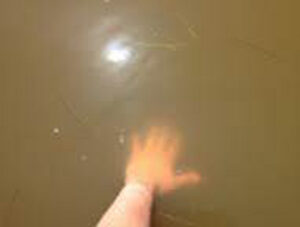
algal bloom 2014
The upper river in Wales is now a significant source of phosphate following a large expansion of the poultry industry. Since 2008 the upper catchment hosts an extra ten million chickens with the Ithon (one of the river’s tributaries in Powys) having the lion’s share. This number of chickens produces large amounts of highly reactive phosphates from their manures, which find their way into the rivers.
According to the latest modelling of water quality, the proportion of phosphate in the lower Wye coming from agriculture has doubled in the past six years, suggesting the river is failing its permitted levels of phosphate under the EU Habitats Directive.
However, NRW insist their information suggests long term phosphate levels in the Wye catchment have been declining.
WSA, in order to provide some much needed data to help clarify this difference of opinion in river phosphate loading have initiated a Citizen Science type project across the main river stem and the Ithon tributary, considered the most affected by ingress of phosphates.
Seven hand-held Hanna Low Range Phosphate Checkers have been purchased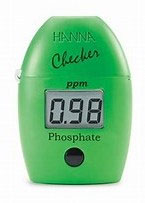 for our volunteers to carry out regular checking of phosphate levels along the Wye and it’s tributary, the Ithon.
for our volunteers to carry out regular checking of phosphate levels along the Wye and it’s tributary, the Ithon.
The Handheld Colorimeter provides a simple way to measure phosphate.
To add science and knowledge opened a line of communication with Cardiff University, establishing, together with Gwent Angling Society, Ross Anglers, and environmental groups such as, Friends of the Upper Wye [FoUW], Campaign for the Protection of Rural Wales (CPRW) an environmental collaborative research project aimed at empowering citizen scientists to monitor water quality. In addition to our original study of phosphates we are broadening our research to include other parameter such as Ammonia, Nitrate, Electrical Conductivity and pH to our monitoring and have acquired use of an smartphone app allowing volunteers to add their samples to our online database at EpiCollect’
Latest Information –
Some Other Sources of Information
A Study of Poultry Farming and its Impact on Water Quality in the Wye
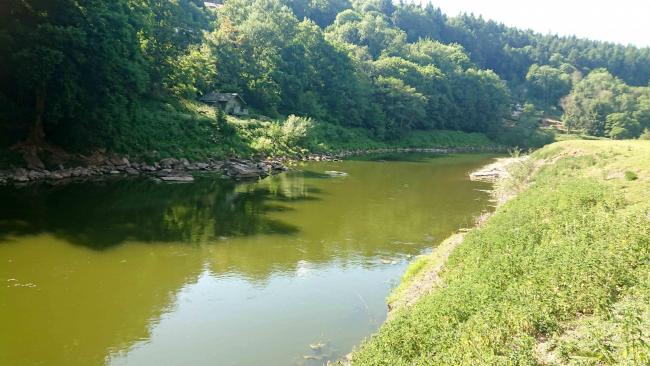
I am text block. Click edit button to change this text. Lorem ipsum dolor sit amet, consectetur adipiscing elit. Ut elit tellus, luctus nec ullamcorper mattis, pulvinar dapibus leo.
